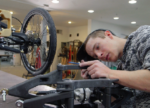Is your talent management strategy ready for the global skills gap?
By Alexandre Pachulski, Co-Founder of Talentsoft Our global economy has begun yet another transformation. We are in the early stages of a fourth industrial revolution that will bring major changes to our societies, driven by advances in connectivity, automation, and artificial intelligence. With that, has come a global gap in the skilled talent necessary to keep pace. As expert Klaus Schwab, puts it, “the changes are so profound that, from a perspective of human history, there has never been a time of greater promise or potential peril.” So how do we fulfill this great promise? A critical piece involves rethinking how we cultivate and manage the talent whom will be leading us forward; whom we will reply upon to innovate, deliver, and maintain these unprecedented developments in technology? The greatest promises of technology cannot be realised without human talent. For that technology to grow and for our economies to thrive, we must be aware of and work to bridge the widening global gap in qualified talent, particularly in manufacturing and STEM-dependent careers, which are central to this latest industrial revolution. There’s an exciting opportunity for forward-thinking leaders to be proactive—especially those in HR, as they are often at the centre of their company’s talent management strategy. The first step for leadership is to assess where they are right now and what changes need to be made to compete effectively in this new era. Leaders who can readily embrace new technologies and strategies will have a significant advantage over those who don’t. Key areas to assess are: Integration and Connectivity The pace of business and reliance on real-time data insists that companies embrace cloud-based technologies and software that can connect easily to existing solutions. Teams needs to be able to work from centralized data so decisions can made from up-to-date information; […]










